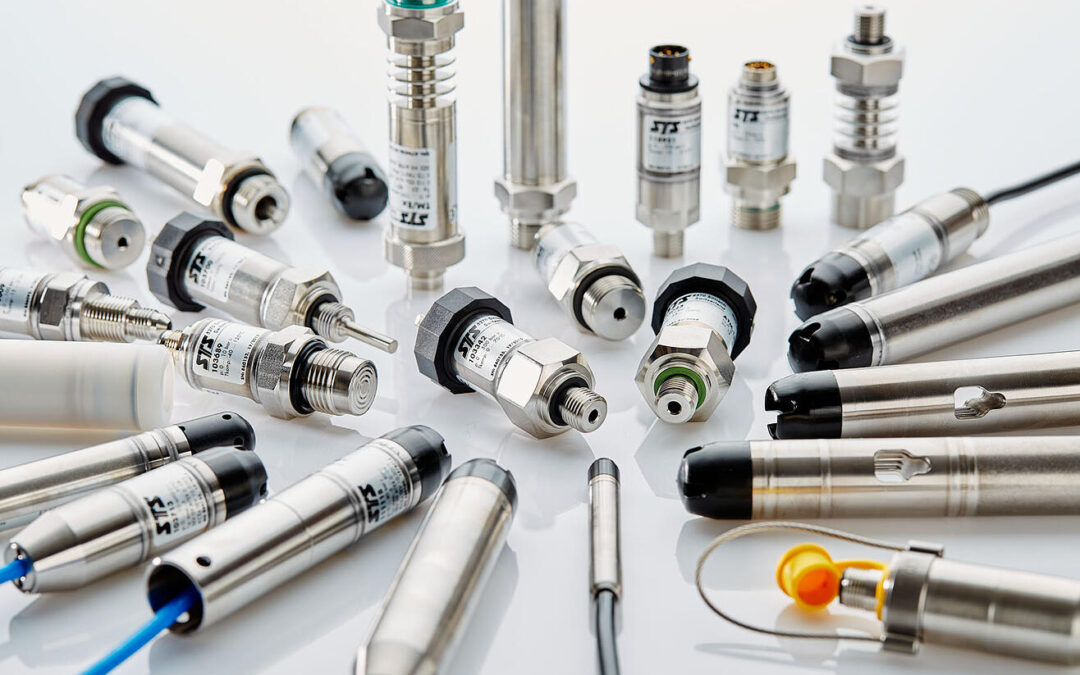Piezoresistive pressure sensors stand out for their high sensitivity. Also in terms of precision and miniaturization, many advantages arise over other measurement instruments. In our knowledge article, we will be explaining the pressure response of piezoresistive pressure sensors.
Users of piezoresistive pressure transducers expect a linear pressure response, in which the output signal is proportional to the applied pressure. For this reason, the curve of the pressure-signal diagram should be a straight line, whose starting point is indicated by the zero position and its sensitivity by the gradient. The true shape of the pressure-signal curve, however, more or less always shows a sharp deviation from the ideal line. This discrepancy is known as the linearity error of the pressure sensor. The gradient of the curve, on the other hand, corresponds to its sensitivity.

We can see from the illustration that a virtually linear part of the curve is utilized when the sensor is used at lower sensitivities (ca. 70% of the nominal chip pressure). Through selection, transmitters can be built of a very low non-linearity (think 0.05 %FS). The prerequisite, however, is that the operating range lies within the linear part of the chip.
The sensitivity of piezoresistive pressure sensors
The sensitivity of a pressure transducer largely depends upon two factors:
- the resistive value of the diffused semiconductor resistors and their piezoresistive effectiveness level,
- the thickness of the silicon diaphragm.
The greatest influence upon pressure response lies in the thickness of the silicon diaphragm. This is defined by its mechanical, chemical or even combined processing. These processes cannot be so precisely controlled that all pressure measurement cells exhibit the exact same sensitivity. Classes are thus established within which the pressure sensors can be used for a particular pressure range. And within these classes, sensitivities can vary by around ±20%. This deviation itself can be compensated for in the electronics through the supply current or the amplification factor (calibration).
The linearity of piezoresistive pressure sensors
It should be noted in linearity specifications that %FS (full scale, final value) is mostly applied. In terms of measured value, the error can carry quite significant weight, even when the manufacturer specification lists a very small value, though displayed in %FS.
In pressure measurement cells, the linearity is dependent on several factors:
- the semiconductor resistors must be sufficiently small and diffused onto the exact right spot on the silicon diaphragm,
- the silicon diaphragm has to be clean, sharp-edged and in exactly the right place,
- linearity is varied, whether positive or negative pressure is measured, meaning whether the diaphragm bulges into a concave or a convex form (tensile or compression load),
- the diameter to thickness ratio of the silicon diaphragm must be within a particular range. Very thin diaphragms will deform with superposed stretching: This balloon-effect, in transducers for lower pressure ranges, leads to a typically S-shaped course of the linearity curve (which cannot be rectified by analog compensation methods).
- with very thick silicon diaphragms, the intended structure of the diaphragm, rigidly fixed at its edges, is no longer achievable, since, for example, with a 1,000 bar transducer, the diaphragm is half as thick as the chip itself.
The overload and burst pressure of piezoresistive pressure sensors
The typical course of a linearity curve is for the most part quite linear and then more heavily flattened. In the interest of as broad an output signal as possible, the longest possible extent of this curve is utilized. Until around two thirds mark, the course is so linear that error is less than 0.5 %FS. Beyond here, the linearity error becomes rapidly more dominant so that a limit from the accuracy is set. Aside from very low and very high pressure ranges, the nominal pressure range can be exceeded by typically around 50% before the measuring cell fails.
To increase overload protection, the idea of a broad effective signal has to be abandoned: A pressure sensor has to be employed, which would in itself be intended for a higher pressure range. Whilst, for example, a mechanical stop can be deployed in capacitive pressure sensors for its membrane deforming under pressure and a very high overload protection ensured, this is barely possible with the comparatively tiny silicon membranes of piezoresistive pressure cells with their most minimal of deflections.
At STS, the burst pressure is defined as the pressure at which a medium can enter the sensor and hence the metallic diaphragm is destroyed. The transducer, however, is already no longer functional at this point. Using Submersible Sensors the housings, cable connectors and cables are definitive. Burst pressure values of the transducer in the datasheet are thus negligible.
